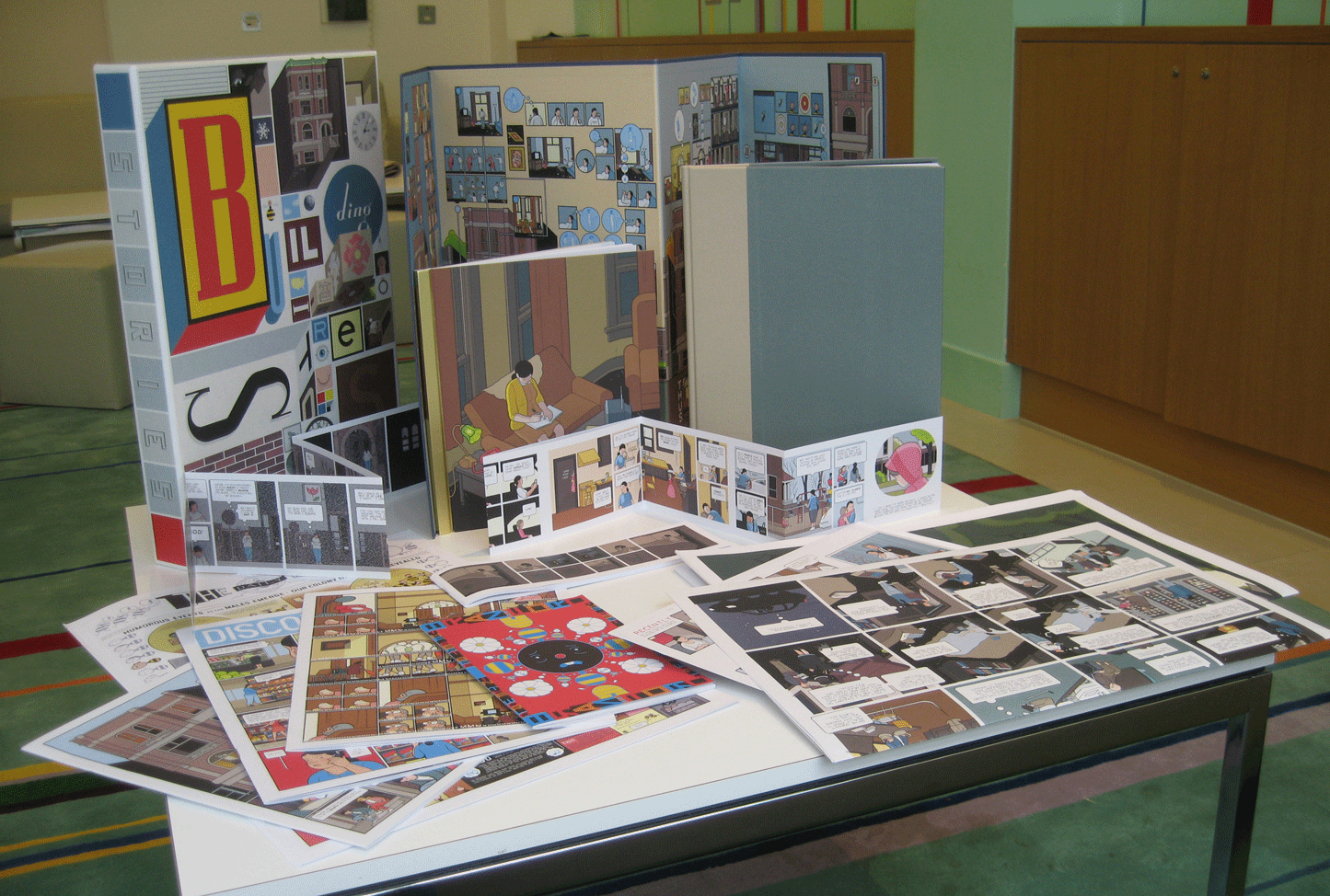I ordered Building Stories by Chris Ware online without having seen it in person. When it came in the mail, I thought, at first, that I had accidentally ordered a board game (this is not necessarily a bad thing). When I looked on the bottom of the box, I read that the box included "everything I needed to read Building Stories." ... Except the book? I thought.
This may be the strangest book I have ever read. It definitely competes with Extremely Loud and Incredibly Close by Jonathan Safran Foer, which includes empty pages, pages filled with numbers, regular pages, and more! I can just imagine what the marketing people must have thought when they were told to generate an audience for the book.
The one thing that Extremely Loud has on Building Stories is the empty pages and such. However, it's got nothing to compare with the formatting of Building Stories.
 |
| A lebkuchen box! |
In like manner, after my self-indulgent tangent, Building Stories features small stories along the outside of the box. These are stories that give you a glimpse of the stories inside the book, but they also can stand on their own as panels of a self-contained story segment. You know how a lot of books will have an excerpt or a tease on the inside flap? I think that's what Chris Ware might have been doing. Either that, or he shares my love of lebkuchen boxes.
Inside the box, there are booklets, individual strips, large posters, and even something resembling a game board. Readers should make sure to read both sides of everything, because Ware does not waste space.
I can't really say what this story is about. It's multiple stories, but the main one -- or the longest one, in any case -- is about the life of a female amputee who goes through stages of feeling alone, growing up, and becoming a mother. She also, and this is part heads-up for those who see this as a red flag, explores her sex life and has an abortion. Remember that this is a graphic novel, and though the pictures are cartoon-esque, they are indeed graphic. Viewer discretion is advised.
 | |
| No, I did not take this picture. It is the book, though. |
I like to keep things simple sometimes.
Reading in that order worked well enough for me. Things were not chronological, but that made it seem like foreshadowing sometimes and it also allowed me to make connections that would have been more difficult to make in regular books. I was reading parts of the story right next to each other, after all, so the juxtaposition was helpful ... or harmful, because I'm sure it made me miss a lot, too.
I'm not sure if I recommend this book or not. Putting aside the whole viewer-discretion thing, I think this would be a good book for someone interested in something new, for someone who enjoys graphic novels, or even for someone who wants a story that just feels real. Even though the story has a non-conventional layout, it still has an element to it that makes it seem completely plausible. Ware is not holding back, not romanticizing, not trying to make things look worse or better than they are. So no, this isn't a particularly happy story ... or is it? It probably depends on the order you read it in.
P.S. - The out-of-order thing works well because it feels like stream of consciousness, the idea being to tell about your past as the memories come to mind. How often do memories come to you in order? Perhaps that's why dreams jump around so much. Huh. Something to think about.

No comments:
Post a Comment